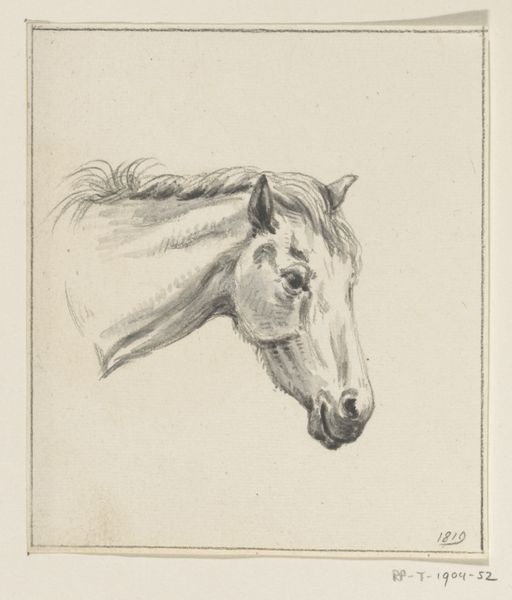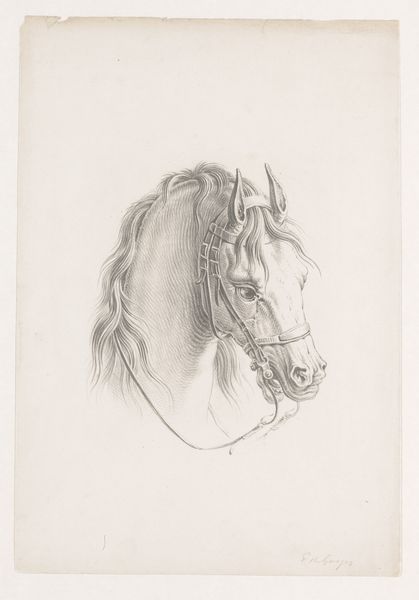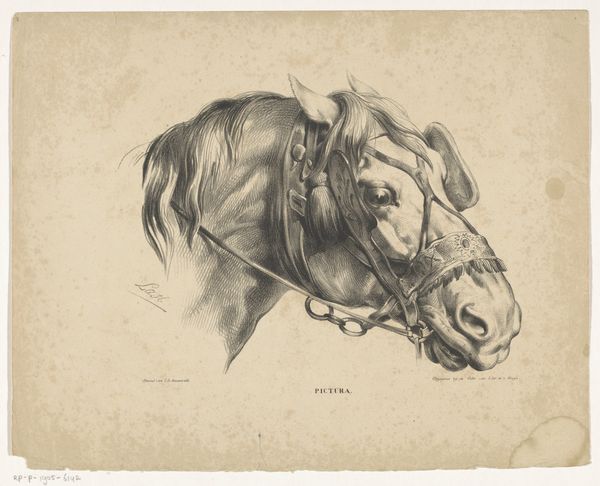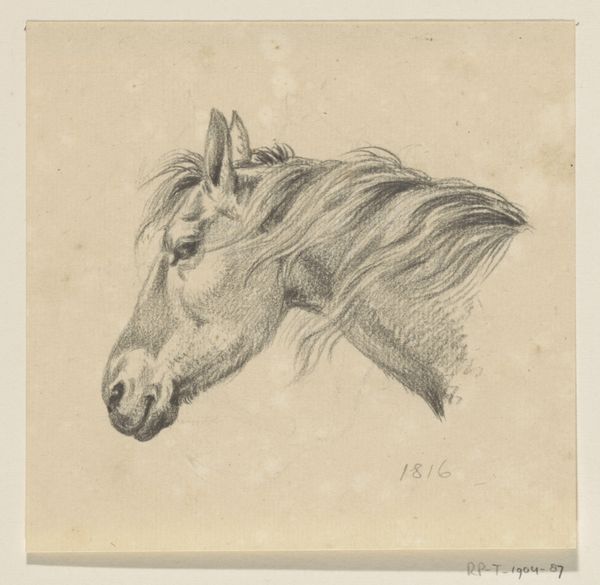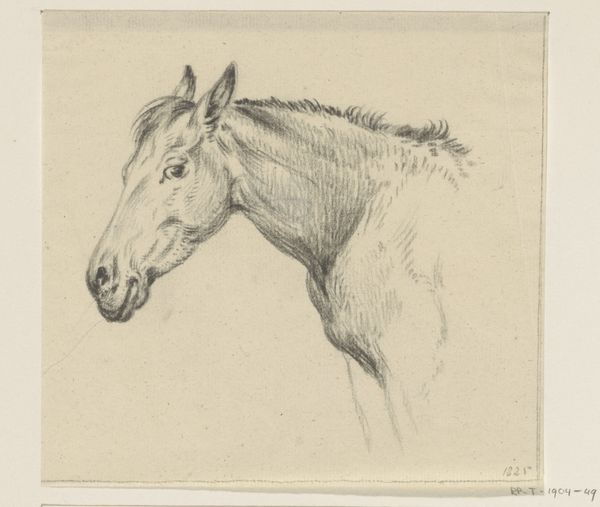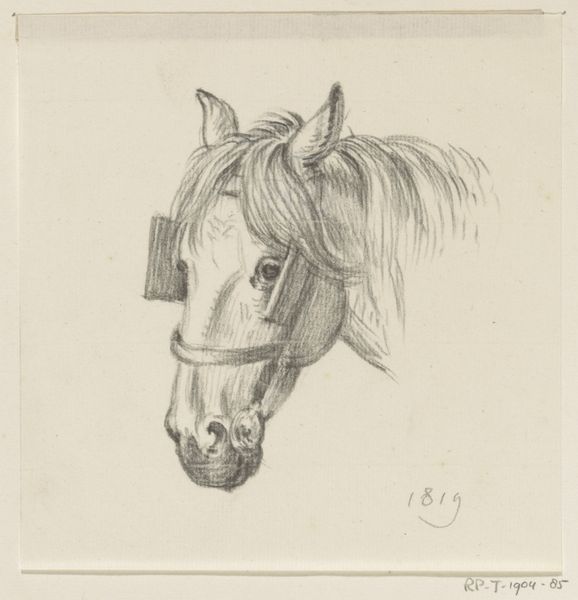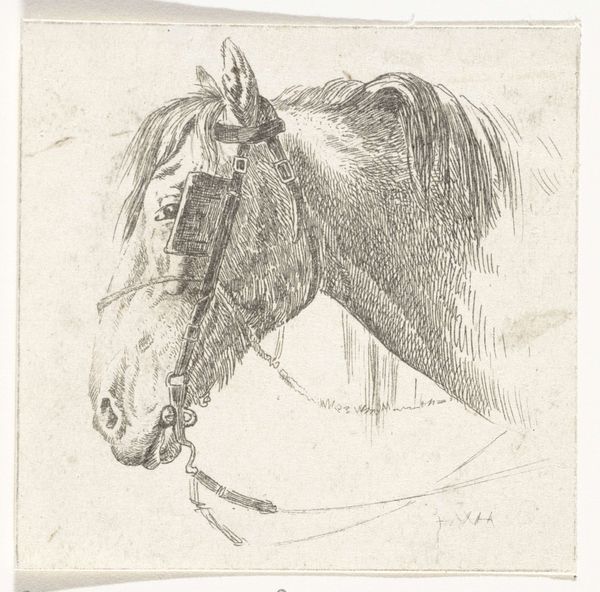
drawing, pencil
#
portrait
#
drawing
#
animal
#
pencil sketch
#
pencil drawing
#
pencil
#
horse
#
portrait drawing
#
realism
Dimensions: height 480 mm, width 330 mm
Copyright: Rijks Museum: Open Domain
Editor: This is "Head of a Horse" by George Hendrik Breitner, made sometime between 1872 and 1878. It's a pencil drawing, and I'm struck by its quiet intensity. What social or historical elements do you find at play here? Curator: I see a poignant commentary on the social roles and exploitation inherent in the relationship between humans and animals, especially horses, during the Industrial Revolution. Breitner often captured Amsterdam’s working class, and this horse becomes almost a portrait of the working animal. Consider how labor and power are embodied here. Editor: It is compelling to think of the horse as a stand-in for the working class. Do you think Breitner's choice of medium—pencil, a more accessible medium—plays into that theme at all? Curator: Absolutely. Pencil’s accessibility democratizes the act of artmaking, aligning it with the lives of ordinary people and their everyday struggles. Breitner's realism, while seemingly straightforward, questions the societal structures that place both humans and animals in these positions. Where do you see its influence in modern art? Editor: That's a great question! It makes me think of contemporary artists who use animals to explore themes of power, control, and environmental exploitation. Artists such as Sue Coe or Walton Ford. This conversation gave me a whole new appreciation of this work, seeing it through that lens of social critique. Curator: Indeed, art provides tools for dialogue about inequality, class and labor relations.
Comments
No comments
Be the first to comment and join the conversation on the ultimate creative platform.
